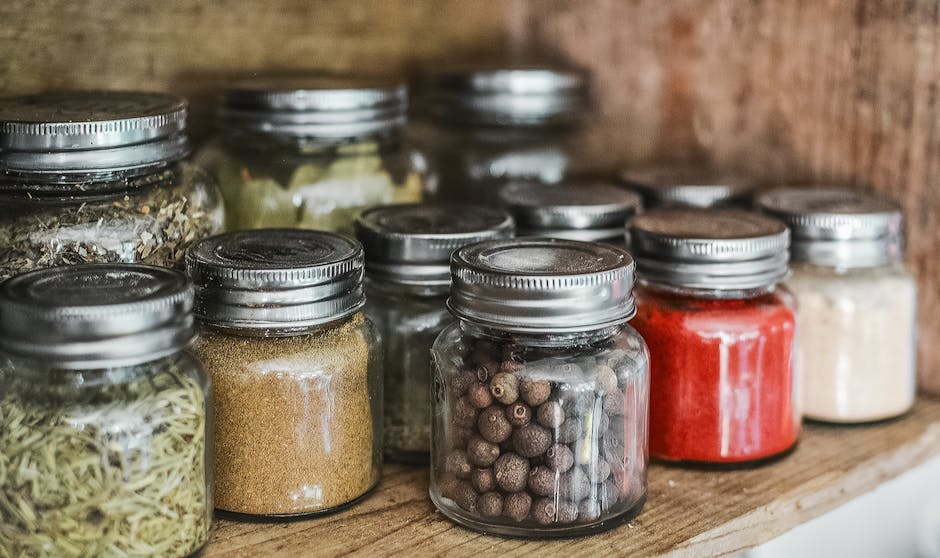Unlock Flavor with Sensory Cooking: Sound, Texture, Visuals
Have you ever tasted a dish that transported you to a different place or time? Our culinary experiences go far beyond flavor alone; they are deeply influenced by sound, texture, and visuals. Welcome to the art of sensory cooking, where we explore how these aspects can elevate your cooking and dining experiences. By tapping into our senses, we can create vibrant meals that resonate on multiple levels, turning every bite into a delightful adventure.
The Symphony of Sound in Cooking

Imagine the crackle of food sizzling in a pan or the rhythmic chopping of vegetables on a cutting board. Sound plays a significant role in our perception of taste. Research suggests that different frequencies and volumes can alter how we experience flavors, with higher frequencies often enhancing sweetness. Cooking with sound in mind transforms not just the food but the overall atmosphere of your kitchen.
Tips for Sound-enhanced Cooking
-
Curate Your Playlist: While you chop and sauté, play music that corresponds to the type of meal you're preparing. For example, upbeat tunes can energize your cooking process, while soothing melodies can create a calm culinary space. This connection between sound and cooking can enhance the flavor experience.
-
Experiment with Kitchen Sounds: If your cooking sessions are typically quiet, try incorporating kitchen sounds intentionally. The sizzling, boiling, and bubbling of ingredients are not only delightful to hear but also enhance your scent and taste perception. The next time you’re cooking, take note of how these sounds engage your senses.
For more insight into how sound influences cooking, check out this resource.
The Texture Tapestry: How Mouthfeel Affects Flavor

Texture—the way food feels in our mouths—can greatly affect the overall eating experience. Whether it's the creaminess of a risotto or the crunch of freshly-fried vegetables, texture plays a vital role in flavor perception.
Creating Textural Harmony in Dishes
-
Layering Textures: When crafting a meal, consider adding components that provide contrasting textures. For instance, pair a smooth, velvety sauce with crispy elements like fried shallots. This dynamic can create a memorable flavor pairing that engages the mouth.
-
Texture and Temperature: Hot meals may taste markedly different than cold ones due to texture perception. Experimenting with temperature can enhance the experience of your dishes. Serve a warm mousse alongside a chilled fruit salad, allowing each distinct temperature and texture to interact on the palate.
Visual Appeal: The Colors of Taste

When it comes to cooking, we eat with our eyes first. The aesthetics of a dish can be just as important as its flavor. Plates filled with vibrant colors naturally attract attention and elevate anticipation.
Enhancing Visual Aesthetics in Your Cooking
-
Culinary Color Wheel: Incorporate a variety of colors in your meals, from dark leafy greens to bright reds of bell peppers. Not only will this boost visual appeal, but it has been suggested that colorful plates provide a wider range of vitamins and nutrients, enhancing overall health.
-
Artful Presentations: Don’t shy away from garnishing plates with fresh herbs, edible flowers, or drizzled sauces. A well-composed platter activates curiosity and desire. The experience of eating becomes even more enjoyable when each element is thoughtfully arranged.
Explore more about this theme in our post on creating visual harmony.
Aroma: The Unsung Hero of Flavor

There’s a reason why smells are so closely associated with memories—aroma is powerful, sometimes evoking nostalgia faster than any taste can. Integrating fragrant herbs and spices into your cooking transforms dishes into aromatic masterpieces.
Strategies for Aromatic Cooking
-
Fresh Herbs & Spices: Utilize fresh herbs in cooking instead of dried ones, as they provide livelier scents that enhance flavor perception. Rosemary, basil, and cilantro should always be on your radar for substantial boosts in flavor.
-
Aromatic Layering: When building layers of flavor, add aromatics early on. Onions, garlic, and ginger create a fragrant base that can significantly uplift a dish. Their aromas can ultimately affect the perception of the entire meal.
To delve deeper into the relationship between aromas and flavor, take a look at our article on creating recipes inspired by childhood scents.
The Multi-sensory Cooking Experience

By recognizing that taste is not a standalone experience but rather part of a multi-sensory journey, we can create incredible culinary magic in our kitchens. The interaction between sound, texture, visuals, and aroma allow for enriched flavors and memorable meals.
Approaching Cooking as an Art Form
-
Create a Sacred Space: Cooking should feel meditative and joyful, not rushed. Set the scene by decluttering your kitchen, lighting a candle, or infusing it with pleasant scents. A serene cooking environment enhances focus and encourages creativity.
-
Experiment with Dishes: Don’t be afraid to step outside your culinary comfort zone. Try exploring global cuisines or reinterpret classic recipes with a sensory twist, allowing you to engage all senses and hone your craft.
-
Engage with Nature: For those passionate about foraging, discover how fresh, wild ingredients can transform dishes. The authenticity and vibrancy of foraged items offer unique flavors that commercial products often lack. For an adventurous twist, explore our insights on discovering wild ingredients.
Tying it All Together

Every dish we prepare and consume can be a celebration of the senses. When we consciously cultivate this awareness, the simple act of cooking evolves into an extraordinary experience.
Practical Steps for Sensory Cooking at Home
-
Mindful Preparation: Before cooking, take a moment to appreciate the visual aspects of your ingredients. Feel the textures, breathe in the aromas, and listen to the sounds you create—these sensations engage your mind, heightening the overall experience.
-
Gather Your Senses: Encourage your family or friends to participate through sensory cooking activities. Challenge yourselves to identify specific flavors or sounds as you create a dish collectively. This bond not only makes cooking enjoyable but also nurtures lasting memories.
In our busy lives, it’s easy to overlook the various elements that enhance our culinary experiences. By embracing sensory cooking, you can transform the ordinary into the extraordinary and ignite a passion for creativity in the kitchen.
Delight in the full experience of cooking, and let your senses be your guide. Not only will your dishes shine brighter, but your appreciation for the art of cooking will deepen immeasurably.
Elevate Your Culinary Experience—Start Sensory Cooking Today
When you think of cooking, remember it’s not just about what you put on the plate but how it envelops your senses. Sound, texture, visuals, and aroma can blend harmoniously to create flavors that linger in memory long after the last bite. Your kitchen is your canvas; so gather your ingredients and start your journey in the world of sensory cooking today!



